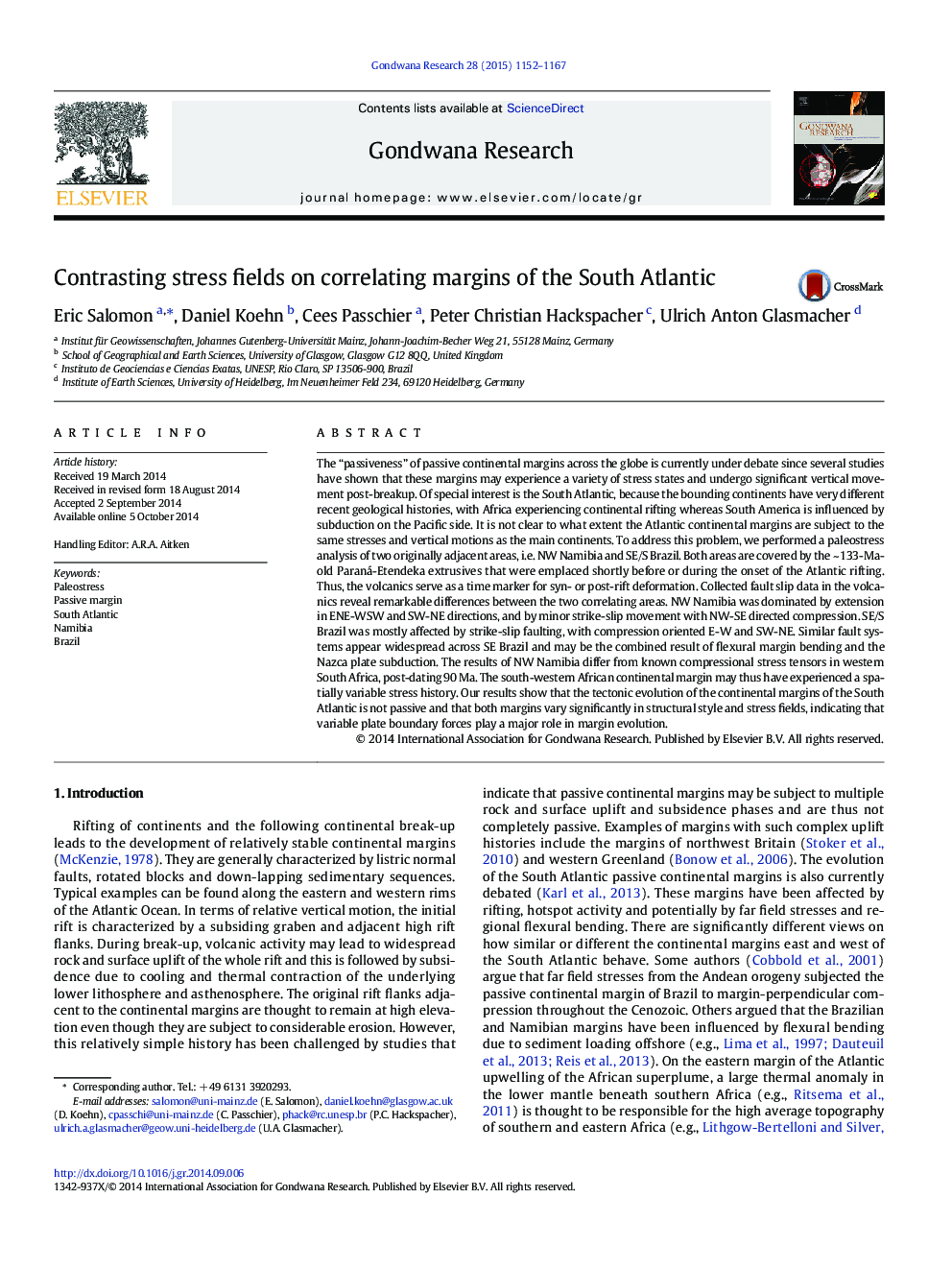| کد مقاله | کد نشریه | سال انتشار | مقاله انگلیسی | نسخه تمام متن |
|---|---|---|---|---|
| 4726730 | 1356344 | 2015 | 16 صفحه PDF | دانلود رایگان |
• Stress history of two formerly adjacent South Atlantic margin areas differ markedly.
• SE/S Brazil is strike-slip dominated and NW Namibia extension dominated.
• Strike-slip is widespread across Brazil and stress systems vary in southern Africa.
The “passiveness” of passive continental margins across the globe is currently under debate since several studies have shown that these margins may experience a variety of stress states and undergo significant vertical movement post-breakup. Of special interest is the South Atlantic, because the bounding continents have very different recent geological histories, with Africa experiencing continental rifting whereas South America is influenced by subduction on the Pacific side. It is not clear to what extent the Atlantic continental margins are subject to the same stresses and vertical motions as the main continents. To address this problem, we performed a paleostress analysis of two originally adjacent areas, i.e. NW Namibia and SE/S Brazil. Both areas are covered by the ~ 133-Ma-old Paraná-Etendeka extrusives that were emplaced shortly before or during the onset of the Atlantic rifting. Thus, the volcanics serve as a time marker for syn- or post-rift deformation. Collected fault slip data in the volcanics reveal remarkable differences between the two correlating areas. NW Namibia was dominated by extension in ENE-WSW and SW-NE directions, and by minor strike-slip movement with NW-SE directed compression. SE/S Brazil was mostly affected by strike-slip faulting, with compression oriented E-W and SW-NE. Similar fault systems appear widespread across SE Brazil and may be the combined result of flexural margin bending and the Nazca plate subduction. The results of NW Namibia differ from known compressional stress tensors in western South Africa, post-dating 90 Ma. The south-western African continental margin may thus have experienced a spatially variable stress history. Our results show that the tectonic evolution of the continental margins of the South Atlantic is not passive and that both margins vary significantly in structural style and stress fields, indicating that variable plate boundary forces play a major role in margin evolution.
Figure optionsDownload as PowerPoint slide
Journal: Gondwana Research - Volume 28, Issue 3, October 2015, Pages 1152–1167
